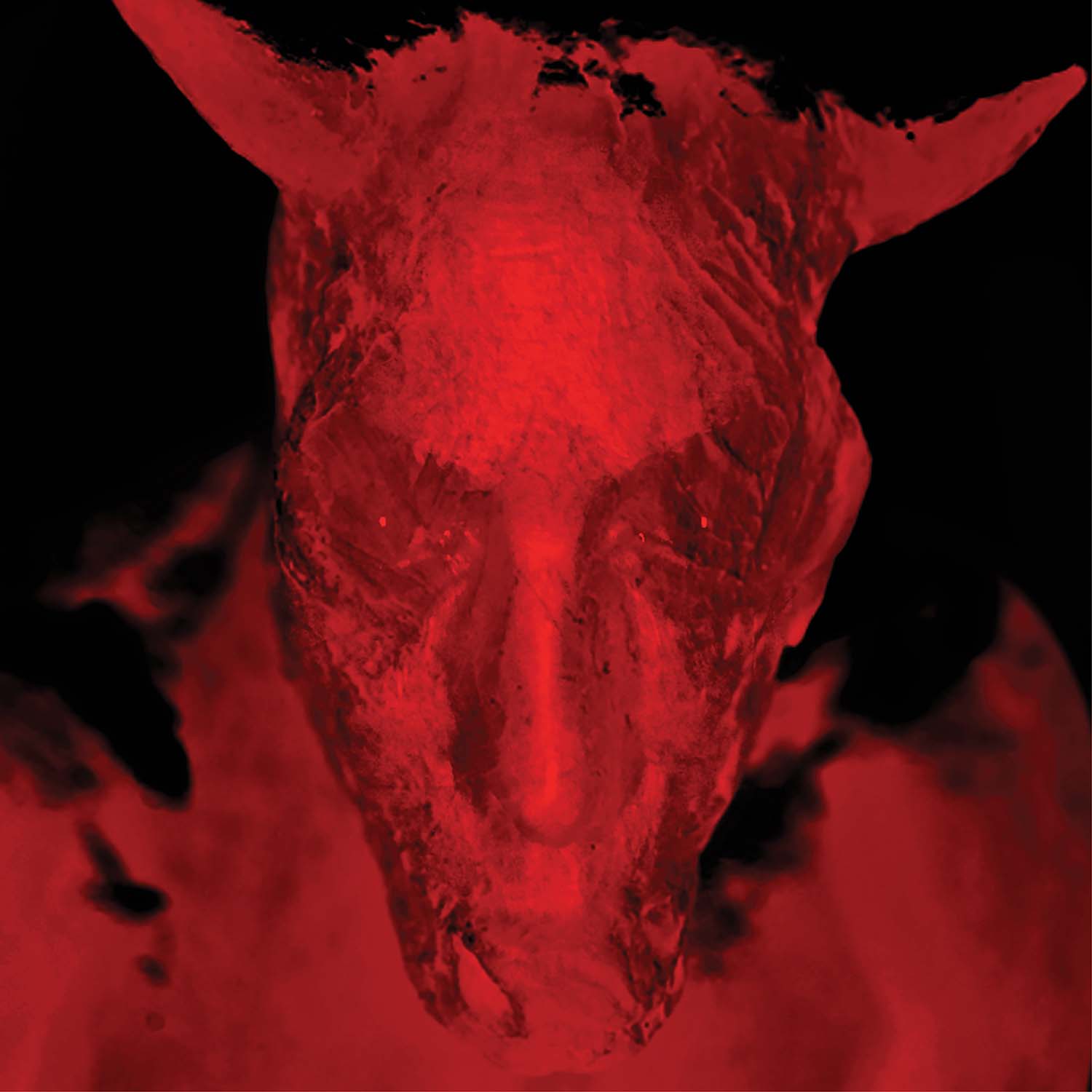Diamanda Galás Breaks the Listener with Broken Gargoyles: Here’s a shocking revelation for you: Diamanda Galás’ new album, Broken Gargoyles, is not a light-hearted, easy-listening romp. We discover in conversation that Galás isn’t keen on descriptors such as “noise” and “avant-garde,” at least she isn’t anymore, because of how restrictive they are. That’s understandable but Fuck.Ing.Hell, Broken Gargoyles is noisy, and it’s certainly a unique and challenging body of work.
The subject matter is extremely heavy, expertly translated into a sonic onslaught that is in turn excruciating and beautiful. Always brutal. Much of what we hear is a devastatingly accurate auditory description of pain and suffering. The first part of the two includes sections from German poet Georg Heym, “Das Fieberspital” and “Die Dämonen der Stadt,” and whether you understand German or not, it’s clear that the nature of the prose is dark.
“I started to work on this piece because of the poem ‘Das Fieberspital‘ by Georg Heym, which means the ‘fever hospital’,” Galás told us via Zoom. “When I read it, I was stunned. When I discover a poem like that, it gives me a reason to continue. It gives me a reason to live because it’s stagnant just to live in one’s own life. It never has interested me in the least. I find it much more interesting to start to analyze a poem that hits me hard. That’s how it happened so it started then. When I moved back to New York, I did some concerts so I was working on that, and this piece had just begun, so I worked on the first part of this piece, I performed it in a few European places and in the Dark Mofo festival in Tasmania as a performance work, the first part. Then I had to leave it to do some live shows for a while, then I came back and continued working on it.”
It was way back in 2012 that Galás started working on this album – the current and ongoing pandemic had no influence on it at all. That said, the timing is impeccable.
“It’s curious that, a lot of my work, I start before it starts to become a subject in society,” she says. “There are certain repeated themes in history and I think they’re quite recognizable, and that’s why I would do something far before this particular epidemic. If you have your eyes and ears open, then you probably don’t need to read the newspaper to get the news. You have to be careful because you’ll never get the news from CNN or Fox. You’ll just get a bunch of fucking crap.”
On first listen, Broken Gargoyles is uncomfortable and thought-provoking. But with the added context Galás supplies (a booklet of poetry, translations and – god forbid – photographs comes with the album to help with that), it’s genuinely traumatic and emotionally draining.
Let’s dive in – the work details, among other things, the suffering of soldiers that returned from World War I with mutilated faces, multiple limbs missing, burned throats and other atrocious injuries, and were kept out of public view in basic facilities in the forest. The tormented vocals on the album are replicating the painful sounds of soldiers with ravaged throats due to mustard gas and the like. That, framed by the harsh German poetry, makes for a terrifying listen. If Galás’ intention was to capture agony, job done!
“A lot of the soldiers with mutilated faces were used as research opportunities by surgeons at that time who were developing plastic surgery,” Galás says. “A lot of them, they could have let die and they should have let die. But they didn’t because they felt them to be, to refer to Dalton Trumbo’s book, Johnny Got His Gun (famously the subject of Metallica’s “One”), useful living mangled flesh. In Trumbo’s book, you start out with this description from this guy who is dislocated. He doesn’t know where he is, he doesn’t know what’s going on and can’t see anything. By the end of the story, he finds out that he’s just a torso with no arms and no legs. He can’t hear. This has happened, and if you look at places like the Walter Reed National Military Medical Center, you can see as early as 2007 there have been big arguments about this. There are people coming back from Afghanistan living in places with mold and no windows, and they’re put in these places because they have nowhere to go. No one’s going to take care of them. But we don’t see that in the news.”
There’s no doubt that war is far more horrific than the uber-patriotic picture that we’re painted on the big news networks. That returning, injured service man and women have consistently been treated horribly. And one would think that it would be draining to channel all of that pain into art. Not necessarily.
“What happens is, when I discover news like this, I become more energized than I become drained,” Galás says. “I think if a person dwells all day long on his or her problems or whatever, that can drain. But when I put myself in a position of learning as much as possible about something that is new to me, then it is different. The inability of humans to see a mutilated face and be able to relate to it on any level, this is because we memorize the expressions. We learn what expressions mean as we grow older. Suddenly when we’re presented with a shattered puzzle, it means you can’t see the original drawing. It’s out of alignment. It means these people could never return to their families, they could never return to their lovers, their wives, or their children, who would scream in horror. Their names would be listed as death, but they would be used medically for research. I don’t see any reason why anyone should assume that this has stopped. That after Vietnam, suddenly everyone is on good behavior.”
Broken Gargoyles has been unveiled as an audio-visual experience at various art installations of various types including, fittingly, at the Kapellen Leprosarium (Leper’s Sanctuary) in Hanover, Germany. Still, she says that you can get the whole story from the sound alone.
“I think the sound tells you everything you need to know, and I think that perhaps for people who don’t speak German then it’s useful for them to see the German/English, and perhaps they want to hear some of the history of the work, what it aligns to,” Galás says. “I would say just turn your lights off and listen to it in the dark, at a pretty loud volume, and it will tell you a lot. I always say that about my music from the beginning. I wrote, ‘Play at maximum volume only.’ That’s because that’s how I listen to things.”
Truly, truly, the stuff of nightmares.
Diamanda Galás Breaks the Listener with Broken Gargoyles: Diamanda Galás’ Broken Gargoyles is out August 26.

(Broken Gargoyles album art)
Editor’s note: The disclaimer below refers to advertising posts and does not apply to this or any other editorial stories. LA Weekly editorial does not and will not sell content.
Advertising disclosure: We may receive compensation for some of the links in our stories. Thank you for supporting LA Weekly and our advertisers.

